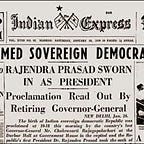The National Identity XXXVI: Understanding Mullah-Military…Mujahid
The entire ‘complex’ in Pakistan explained in one incident
The siege at the Red Mosque in Lahore in July 2007 is remembered the world over for one simple reason — it brought Pakistan’s civil war out into the open. After an 18 month reign of terror by the Islamic fundamentalists inside the mosque and the neighbouring hostel — Pakistan sent in the Army to storm the mosque and restore peace. The operation and set up is eerily similar to what India faced in Amritsar in 1984 — just a few miles away. As for the consequences of the civil war in Pakistan — India bears its own scars. Mumbai, Delhi, Hyderabad, Pune and Ahmedabad were all attacked, with the decade’s attacks culminating on 26/11/2008 in Mumbai.
Whilst many would think that Pakistan’s civil war, war on terror and military rule all made the noughties exceptional — what is truly exceptional, and has far-reaching consequences, is the fatal interaction of these forces.
President Pervez Musharraf was Pakistan’s President at the time of the siege, having come to power in a military coup post Kargil. His, and the Pakistani Army’s story, is penned here. He didn’t only send in the Army, but also the special forces — the Special Services Group, the SSG. It is also his own regiment (although he was…
